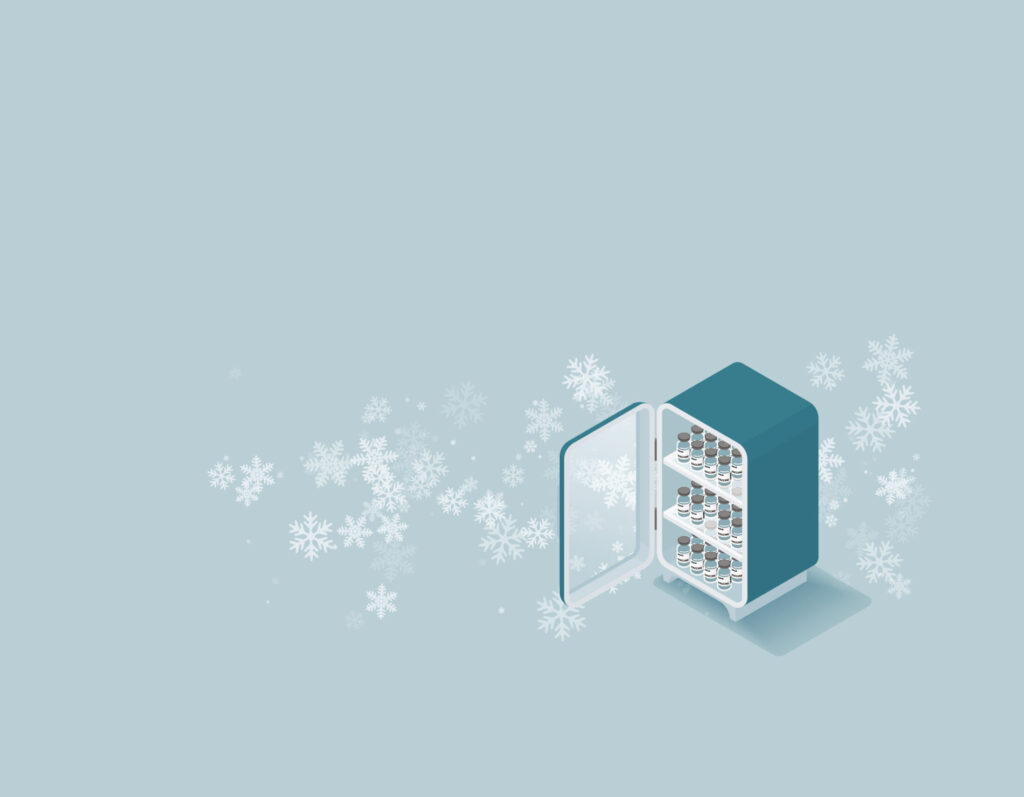Home » Medication safety: Pharmaceutical-grade refrigerator
Professional Services Pharmacist, Lara Marín talks in this article about pharmaceutical grade refrigerators requirements including specifications, temperature monitoring and advice on cold chain breaches.

Storing medicinal products within the temperatures advised by the product’s manufacturing company is very important as a deviation from this practice may have a negative impact on patient safety and could result in the waste of medicines, as they may need to be disposed of. A cold chain medicine is a medicinal product that requires storage at a specific temperature range. Cold chain medicines stored in a pharmacy are required to be stored in pharmaceutical grade refrigerators between 2°C and 8°C in accordance with manufacturer’s specifications. Therefore, if a cold chain medicine is stored outside the recommended storage conditions, this will pose an immediate risk to members of the public as the pharmacist cannot ensure the continued therapeutic effectiveness of the medicinal product.
To ensure that cold chain medicines are stored appropriately, pharmacies are required to have a pharmaceutical-grade refrigerator at the pharmacy. These refrigerators include features in their design that facilitate having a constant temperature within the refrigerator with small variations, and promote the stability of the cold chain medicinal products stored inside. Those features are:
In addition to routine maintenance and monitoring of the refrigerator (including cleaning and visual inspection of the refrigerator’s seals), this should be serviced at least once a year. The purpose of this service is to verify and validate that the refrigerator is fit for purpose. Records of the service should be retained at the pharmacy.
The layout of the medicines stored within the refrigerator will also have a direct impact on the uniformity of the temperature maintained. It is important that these medicines are not stored on the floor of the unit and that sufficient space is maintained between the products and the internal surfaces. This measure will facilitate adequate air circulation and consistent temperatures throughout the refrigerator.
If you are required to procure a pharmaceutical grade refrigerator or move the refrigerator to a new location, it should be allowed to stand for a minimum of 24 hours before it is switched on. This will allow for the gases to stabilise before it is switched on. After that, record the temperature for 48 hours to ensure the refrigerator is maintaining the correct temperature.
Pharmacists must ensure that the pharmaceutical grade refrigerator’s maximum and minimum temperatures are checked daily and that records of temperature monitoring are maintained at the pharmacy. This activity is one many that pharmacists carry out as part of the quality assurance process implemented at the pharmacy.
A member of the pharmacy team should check the maximum and minimum temperatures, preferably twice daily, reset the temperature sensor and record the reading. If there is a breach in the temperature, the pharmacist on duty should be informed immediately and escalate the matter in accordance with the pharmacy protocols.
Pharmacies may opt to have an independent temperature monitoring probe or data logger (a battery-powered continuous recording device), to record the pharmaceutical grade refrigerator temperature. The data recorded in the probe/data logger should be downloaded weekly, the electronic records should be reviewed by the supervising pharmacist, and this review is documented. However, daily visual checks of the maximum and minimum temperature must still be in place and this activity must be recorded. An advantage of having a probe/data logger is that if there is a breach in temperature, the probe/data logger will provide you with information regarding the duration of the temperature breach. Please note that these probes/data loggers should also be calibrated in accordance with the manufacturer’s specifications at a minimum annually. These date calibration records should be maintained at the pharmacy.
If there is a temperature breach, the pharmacy team and pharmacist should:
If you experience a breach in the pharmaceutical grade refrigerator temperature or have queries regarding the maximum and minimum temperature monitoring, the IPU Professional Service Team is available to support you. In addition to this, you may consider using the NHS Refrigerated medicines stability tool (available at sps.nhs.uk > Tools > Refrigerated medicines stability tool). This will support you with the assessment of the impact of cold chain breaches. Please note that not all the Irish licensed medicines might be listed. There are occasions in which medicines have been exposed to conditions outside their product license, and their use may still be appropriate, but it is off-label. This NHS tool includes information that is within and outside the product license. Therefore, you might be required to use your professional judgement.
Additional information regarding pharmaceutical grade refrigerators, and management of cold chain failure are available on the PSI website and HSE immunisation website.
References available on request.
Lara Marín

MPSI
Highlighted Articles